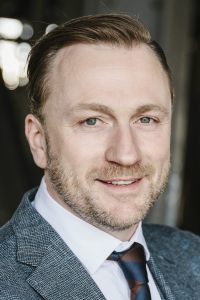There are those people to whom, when they speak, we could listen forever—almost no matter what they say; it somehow touches us and sweeps us along. And then there are others whom we can’t follow; sitting in the theatre, we grow restless or can’t quite manage to absorb what they’re declaiming. Why is this so?

It’s a question that has repeatedly preoccupied Florian Reiners, professor of lead speech at the Max Reinhardt Seminar, in the course of his teaching as well as in actual practice at numerous theatres. That question of why, when an actor recites and interprets a text in keeping with its content, it still doesn’t really land with the audience. “I found out together with my students that in such cases, the speakers lacked mental imagery that was fit to convey their words to—and, in turn, to enable corresponding imagery to arise within—their listeners,” Reiners recalls. “So in order to arrive at imagery for the interpretation of a text, I developed the method “Bilder sprechen” [Talking Pictures]—a creative and visual tool that nobody had yet described—with the aim of helping the words spoken by individuals to become lively, spontaneous, and direct. It ended up working so well that I’ve now been using it as a permanent component of my teaching for many years.” Because students were constantly asking whether they could read up on this method somewhere, Reiners wrote down his hypotheses and gave them to his colleague Susanne Altweger—herself a former Max Reinhardt Seminar student—for evaluation from a psychological standpoint. Altweger explains: “I was familiar with working on texts both as an actor and as a director, on top of which I’d pursued extra-occupational studies in psychology. I also deal with text as a communication coach and was already accustomed to working with images due to my additional training in guided affective imagery.” Thanks to her background, Altweger was able to explain the experiences that Reiners had tested empirically in his everyday teaching from a psychological standpoint. The result was their book entitled Das gesprochene Bild [The Spoken Image]. And it was thus that “Bilder sprechen”, a method for the artistic use of the spoken word, was born.

But how exactly does it all work? “In order to transfer spontaneity and liveliness to the authored texts that are to be reproduced, I employ the speakers’ internalised imagery. This initially arises by way of some enrichment, by which I mean doing a deep dive on a given text, that text’s author, and the era during which it was authored. Thereafter, the text is divided up in a way that makes sense and is then made available via linkage with the speaker’s mental imagery. What’s special about this is that we break the text down into short passages and think up partial characters that often represent nothing more than characteristics, at first. So something like ‘the furious’, ‘the compulsive’, etc. We then seek out appropriate ‘signalling imagery’ to go along with them—like people from movie scenes or our everyday experience, whom we attach to those partial characters in a playful way. And when we interpret texts, we link our partial characters with the appropriate passages to allow the signalling imagery to be called up at any time. This affords the speakers spontaneity and interpretational freedom when speaking”, says Reiners in explanation of his technique. An important point is that this method draws not on one’s own memories or character traits but on those of “borrowed” characters, as Reiners describes it. The advantage here is that private experiences or feelings aren’t (or don’t need to be) accessed onstage, which is something that can be difficult.

Just why this technique works so well is explained by Susanne Altweger as follows: “Long before we acquire language, we perceive the world visually. Images are extremely powerful—and here, we can take advantage of that. What we’re engaging in is an iterative process: the described enrichment helps in developing the result—in this case, a stirring realisation of a text via speech and mental imagery—to a point where that which is said is audibly consistent with the person saying it.”
In other words, texts are linked with emotional content and imagery and then repeated multiple times in order to store and render retrievable an association that is consistent and coherent, and one ultimately ends up with a lively spoken text. “There are many ways in which a sentence can be uttered, but by the end of successful engagement with a text, there’s really only one. And we hope that in this way, ‘Bilder sprechen’ can inspire all speakers to go exploring and find their own spoken imagery,” Reiners concludes.

